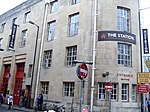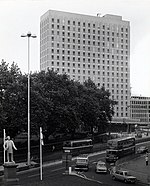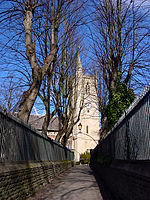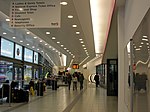Lewin's Mead Unitarian meeting house
Bristol building and structure stubsChurches completed in 1791Churches in BristolEnglish church stubsFranciscan monasteries in England ... and 3 more
Grade II* listed churches in BristolUnitarian chapels in EnglandUse British English from February 2023

Lewin's Mead Unitarian meeting house is a former Unitarian church in Bristol, England.
Excerpt from the Wikipedia article Lewin's Mead Unitarian meeting house (License: CC BY-SA 3.0, Authors, Images).Lewin's Mead Unitarian meeting house
Silver Street, Bristol Broadmead
Geographical coordinates (GPS) Address Nearby Places Show on map
Geographical coordinates (GPS)
| Latitude | Longitude |
|---|---|
| N 51.45735 ° | E -2.59243 ° |
Address
Silver Street
Silver Street
BS1 2AG Bristol, Broadmead
England, United Kingdom
Open on Google Maps







